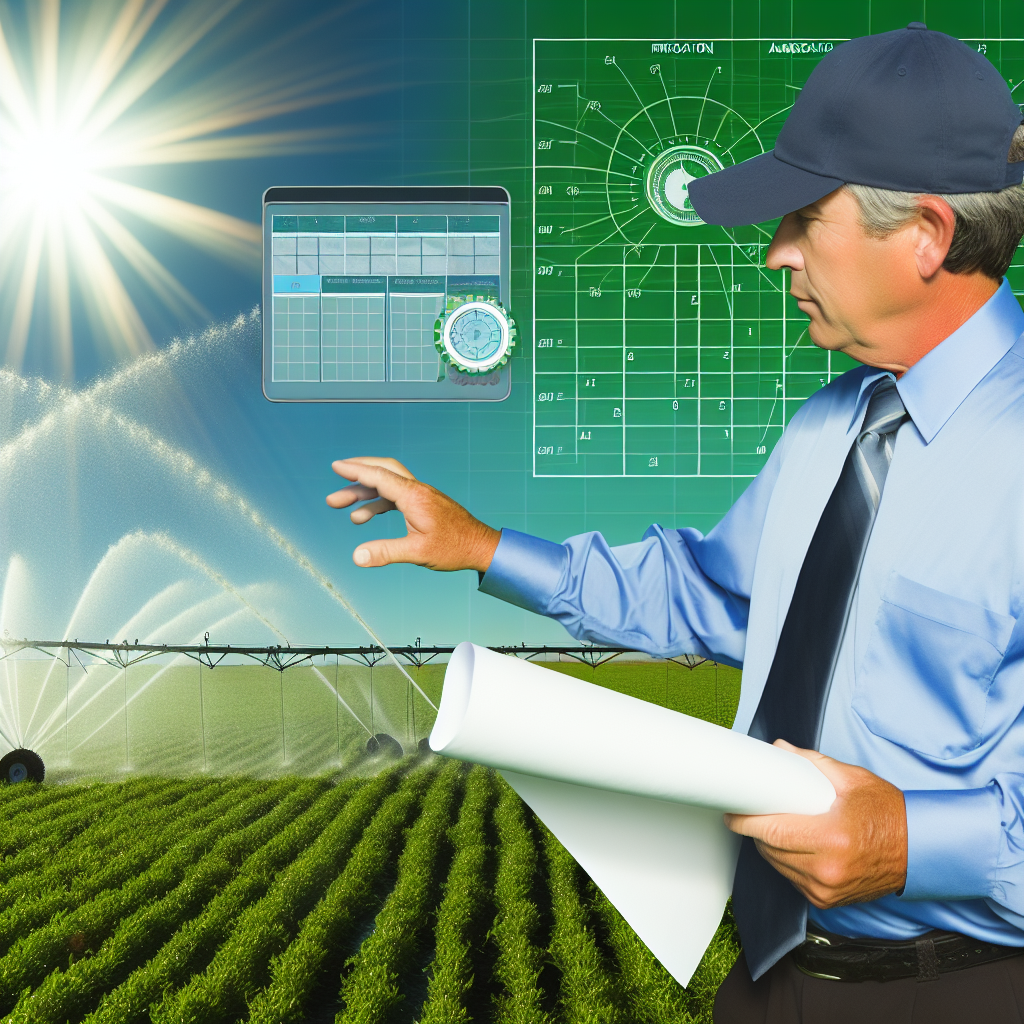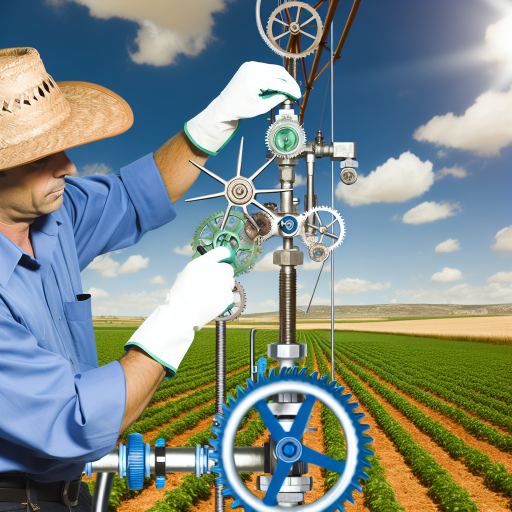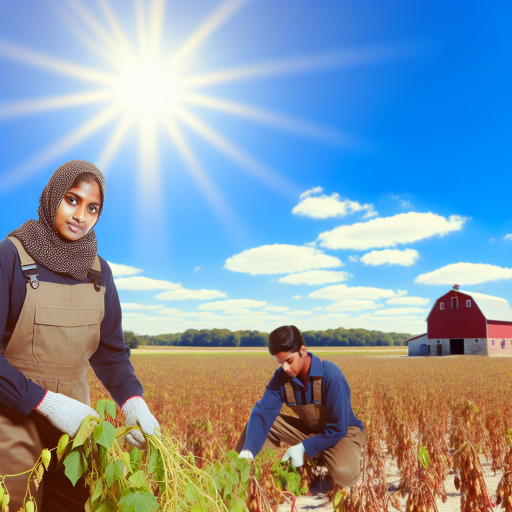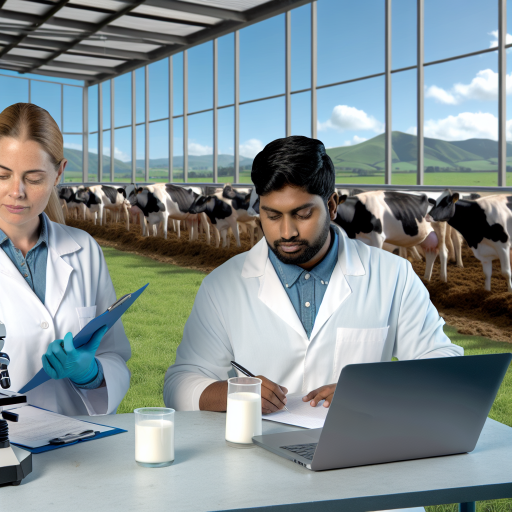Introduction:
Irrigation scheduling and management involve planning when and how much water to apply to crops.
Proper irrigation is crucial for plants’ growth, development, and overall health.
Understanding Irrigation Scheduling
- Definition of irrigation scheduling
- Factors to consider when creating an irrigation schedule (weather, soil type, plant type)
- Importance of timing and frequency in irrigation scheduling
Definition of Irrigation Scheduling
Irrigation scheduling refers to the process of determining when, how much, and how often to water crops.
By creating and following an irrigation schedule, farmers can ensure that their crops receive the right amount of water at the right time.
Factors to Consider in Irrigation Scheduling
Weather conditions play a crucial role in irrigation scheduling.
Farmers need to account for precipitation, temperature, and humidity levels.
Soil type also affects irrigation scheduling.
Soil with high clay content retains more water, while sandy soil drains water quickly.
The type of plant being grown is another important factor to consider.
Different plants have varying water requirements at different growth stages.
Importance of Timing and Frequency
The timing of irrigation is crucial.
Irrigation should be done early in the morning or late in the evening to minimize evaporation.
Frequency of irrigation is also essential.
Overwatering can lead to waterlogging and nutrient leaching, while underwatering can result in wilting and yield loss.
By carefully timing and determining the frequency of irrigation, farmers can optimize water use efficiency and maximize crop yields.
Understanding irrigation scheduling is critical for the success of agricultural operations.
By considering factors such as weather, soil type, and plant type, along with paying attention to timing and frequency, farmers can ensure that their crops receive the right amount of water at the right time.
This leads to improved yields and overall farm profitability.
Transform Your Career Today
Unlock a personalized career strategy that drives real results. Get tailored advice and a roadmap designed just for you.
Start NowIrrigation Methods for Farmers
When it comes to irrigation, there are several methods that farmers can choose from based on their specific needs and constraints.
Each method has its own set of advantages and disadvantages, making it important to carefully consider the best option for your particular situation.
Drip Irrigation
Drip irrigation is a method where water is slowly dripped onto the soil directly at the root zone of plants.
This method is highly efficient in terms of water usage, as it minimizes evaporation and runoff.
Drip systems can be automated and are ideal for crops that require frequent watering, such as vegetables and fruits.
- Pros: Efficient water usage, reduces weed growth, minimizes soil erosion.
- Cons: Initial setup can be costly, clogging of emitters may occur.
Drip irrigation is particularly beneficial for areas with limited water supply or for plants that are sensitive to moisture fluctuations.
It is also a great option for sloped or uneven terrain where traditional methods may not be as effective.
Sprinkler Irrigation
Sprinkler irrigation involves spraying water over the plants in a manner similar to rainfall.
This method is commonly used in large agricultural fields and can cover a wide area.
Sprinkler systems are versatile and can be adjusted to deliver water at different rates depending on the crop’s needs.
- Pros: Covers a large area, can be automated, cools plants during hot weather.
- Cons: Not as water-efficient as drip irrigation, can lead to leaf wetness and diseases.
Sprinkler irrigation is suitable for a variety of crops, including grains, alfalfa, and corn.
It is best used in areas with flat terrain and access to a sufficient water source.
However, it is important to monitor the system to ensure uniform water distribution and avoid water wastage.
Furrow Irrigation
Furrow irrigation involves creating small channels or furrows between rows of plants and flooding them with water.
This method is commonly used in row crops such as corn, soybeans, and cotton.
Furrow irrigation is relatively simple and cost-effective, making it a popular choice for many farmers.
- Pros: Easy to set up, minimal equipment required, suitable for row crops.
- Cons: May lead to water wastage, can cause soil erosion and runoff.
While furrow irrigation is efficient for row crops, it may not be suitable for all types of plants or soil types.
It is important to properly manage the water flow to avoid overwatering or underwatering the crops.
Additionally, maintaining proper soil structure can help prevent erosion and nutrient runoff.
Showcase Your Business Today
Reach thousands of readers actively exploring professional services. Publish your business profile and grow your audience now.
Publish NowChoosing the Most Suitable Method
When deciding on the best irrigation method for your farm, it is essential to consider the specific needs of your plants and the environmental factors at play.
Factors such as soil type, topography, climate, and water availability will impact the effectiveness of each irrigation method.
For example, if you are growing water-sensitive plants in an arid region with limited water supply, drip irrigation may be the most suitable choice.
On the other hand, if you have a large field of grain crops with uniform water needs, sprinkler irrigation might be more practical.
Ultimately, the goal is to maximize water efficiency while providing adequate moisture for plant growth.
By evaluating the pros and cons of each irrigation method and taking into account your specific circumstances, you can choose the most appropriate option for your farm.
Find Out More: Success Stories from Extension Agent Initiatives
Water Management in Irrigation
Water is a precious resource.
It plays a vital role in crop production.
Efficient water management in irrigation is crucial for sustainable agriculture.
It also helps in maximizing crop yield.
Importance of Water Conservation in Agriculture
- Conserving water in agriculture helps in reducing the overall water footprint of farming activities.
- Water conservation practices ensure the availability of water for future generations and maintain ecological balance.
- Reducing water wastage through efficient irrigation practices helps in optimizing crop production and profitability.
- Conservation of water resources in agriculture contributes to environmental sustainability and mitigates water scarcity issues.
Strategies for Efficient Water Use in Irrigation
- Employing drip irrigation systems to deliver water directly to the roots of plants, minimizing evaporation losses.
- Implementing precision irrigation techniques to apply water based on the specific needs of crops and soil conditions.
- Using moisture sensors and automation technology to monitor soil moisture levels and regulate water application accordingly.
- Applying mulching materials to the soil surface to reduce evaporation, maintain soil moisture, and enhance water use efficiency.
Impact of Water Management on Plant Growth and Yield
- Effective water management in irrigation ensures proper hydration of plants, supporting their growth and development.
- Proper water supply enhances nutrient uptake by plants, leading to improved physiological functions and higher yields.
- Insufficient water supply can hinder plant growth, reduce photosynthesis, and result in lower crop yields and poor quality produce.
- Overwatering can lead to waterlogging, nutrient leaching, and various diseases, negatively impacting plant health and productivity.
Water management in irrigation is essential for sustainable agriculture and crop production.
By implementing efficient water conservation strategies and utilizing technology to optimize water use, farmers can improve productivity.
This approach reduces environmental impact and ensures the long-term viability of their farming operations.
Uncover the Details: Understanding Veterinary Technician Licensing
Monitoring Soil Moisture Levels
There are several techniques available for measuring soil moisture levels.
These include tensiometers, moisture sensors, and visual inspection.
Each of these methods has its own advantages and limitations.
When used together, they can provide a comprehensive picture of the soil moisture status in a field.
Techniques for measuring soil moisture
- Tensiometers: Tensiometers are instruments that measure soil moisture tension.
- They provide a direct measurement of water availability to plants.
- They are particularly useful in determining when to irrigate.
- Moisture Sensors: Moisture sensors are electronic devices that measure the volumetric water content in the soil.
- These sensors can be installed at different depths.
- They help monitor the distribution of moisture in the root zone.
- They provide real-time data on soil moisture levels.
- This data can help farmers optimize irrigation scheduling.
- Visual Inspection: Visual inspection involves physically assessing soil moisture levels.
- This method is more subjective compared to using instruments.
- However, it can still provide valuable information.
- It is especially useful for monitoring surface moisture near the plant roots.
Importance of monitoring soil moisture
Monitoring soil moisture is crucial for making informed irrigation decisions.
By regularly monitoring soil moisture levels, farmers can avoid overwatering or underwatering their crops.
Such actions can lead to reduced yields and water wastage.
Proper irrigation scheduling based on soil moisture readings can also improve crop quality.
Additionally, this practice reduces the risk of disease.
Adjusting irrigation schedules based on soil moisture readings
One key benefit of monitoring soil moisture is adjusting irrigation schedules based on real-time data.
If soil moisture levels are consistently high, farmers can delay irrigation.
This helps to prevent waterlogging of crops.
On the other hand, if soil moisture levels are low, farmers can schedule irrigation.
This ensures that plants receive an adequate amount of water.
Overall, monitoring soil moisture levels is essential for efficient irrigation scheduling and management.
By using a combination of different techniques and regularly monitoring soil moisture, farmers can optimize water use.
This improves crop health and can ultimately increase yields.
See Related Content: Key Regulations for Agricultural Quality Control Inspectors
Understanding Irrigation Requirements
When it comes to understanding irrigation requirements, several factors come into play.
These factors play a crucial role in determining when and how much water your plants need.
Let’s delve into some of the key factors influencing irrigation requirements:
Understanding Plant Water Needs at Different Growth Stages
One primary factor that influences irrigation requirements is the growth stage of the plants.
Different plants have varying water needs at various stages of their growth cycle.
For instance, young seedlings require more frequent watering compared to mature plants with established root systems.
Effect of Temperature, Humidity, and Wind on Water Loss Through Transpiration
The environmental conditions, such as temperature, humidity levels, and wind, play a significant role in determining how much water is lost through transpiration.
Showcase Your Business Today
Reach thousands of readers actively exploring professional services. Publish your business profile and grow your audience now.
Publish NowHigher temperatures and lower humidity levels can lead to increased water loss from plants.
This condition requires more frequent irrigation to compensate for the lost moisture.
Wind can also accelerate transpiration rates, further impacting the plant’s water requirements.
Adjusting Irrigation Schedules Based on Seasonal Changes and Plant Growth Rates
Seasonal changes and the growth rates of plants are essential considerations when determining irrigation schedules.
During hot summer months, plants may require more frequent watering due to increased evaporation rates.
In contrast, during cooler seasons, plants may need less water.
Additionally, as plants grow and develop, their root systems become more established.
This growth affects their water requirements.
It is crucial to adjust irrigation schedules accordingly to meet the evolving needs of the plants.
By taking into account these factors influencing irrigation requirements, you can effectively manage your irrigation scheduling.
This management ensures optimal growth and health of your plants.
Understanding the water needs of your plants at different growth stages, monitoring environmental conditions, and adapting irrigation schedules based on seasonal changes are key to successful irrigation management.
Discover More: The Role of Agricultural Economists in Crop Forecasting

Role of Proper Drainage in Irrigation
Proper drainage plays a crucial role in preventing waterlogging and root rot in agricultural fields.
Waterlogging occurs when the soil becomes oversaturated with water, leading to decreased oxygen levels in the root zone.
This lack of oxygen can suffocate plant roots, inhibit nutrient uptake, and promote the growth of anaerobic pathogens.
Similarly, root rot is a fungal disease that thrives in waterlogged soils, causing root decay and ultimately plant death.
Designing Drainage Systems for Optimal Water Distribution
When designing drainage systems, it is essential to consider the topography, soil type, and rainfall patterns of the area.
Surface drainage, such as ditches and culverts, can help divert excess water away from crops and prevent waterlogging.
Subsurface drainage, like tile drains and French drains, can effectively remove excess water from the root zone and improve soil aeration.
Properly designed drainage systems can ensure optimal water distribution and prevent water-related plant diseases.
Maintaining Drainage Infrastructure for Long-Term Irrigation Efficiency
Regular maintenance of drainage infrastructure is crucial for long-term irrigation efficiency and effectiveness.
Over time, pipes and ditches can become clogged with sediment, roots, or debris, hindering water flow and drainage capacity.
Regular inspections, cleaning, and repairs of drainage systems can help prevent waterlogging, soil erosion, and nutrient leaching.
Investing in the maintenance of drainage infrastructure is essential for preserving soil health and ensuring sustainable crop production.
Implementing Drought Management Strategies
During drought conditions, it is crucial to take specific steps to conserve water and protect plants.
Here are some strategies to implement:
Steps to Take During Drought Conditions
- Adjust irrigation schedules and reduce water usage to fit the needs of plants.
- Consider using alternative irrigation methods such as drip irrigation to minimize water waste.
- Implement rainwater harvesting techniques to collect and store water for later use.
- Monitor soil moisture levels regularly to ensure plants are not over or under-watered.
Using Drought-Tolerant Plant Species and Mulching Techniques
- Select plant species that are well-adapted to drought conditions and require less water.
- Apply mulch around plants to retain soil moisture, regulate temperature, and suppress weeds.
- Consider xeriscaping, which involves using native, drought-tolerant plants in landscaping.
- Use organic mulch materials like wood chips, straw, or grass clippings to improve water retention.
Importance of Proactive Planning for Water Scarcity in Irrigation Systems
- Develop a water management plan that includes water-saving practices and technologies.
- Invest in water-efficient irrigation systems like smart controllers or soil moisture sensors.
- Regularly assess and maintain irrigation equipment to prevent leaks and minimize water loss.
- Train staff members on proper irrigation techniques and water conservation strategies.
By implementing these drought management strategies, you can minimize water usage, protect your plants, and ensure the sustainability of your irrigation system during periods of water scarcity.
Irrigation Scheduling and Management in Agriculture
Irrigation scheduling and management play a crucial role in optimizing crop production.
Efficient irrigation practices are essential for sustainable agriculture and conserving valuable resources.
It is important to continue researching and learning about advanced irrigation techniques to enhance crop yields.
By implementing proper irrigation scheduling and management strategies, farmers can improve their overall productivity and profitability.
Understanding irrigation practices is key to ensuring food security and environmental sustainability in agriculture.
Additional Resources
FFAR Grant Addresses Precision Irrigation Scheduling for Specialty …
Water Quality and Irrigation Research at Rosholt Farm | Minnesota …
[E-Books for Sale]
The Big Book of 500 High-Paying Jobs in America: Unlock Your Earning Potential
$19.99 • 500 High-Paying Jobs • 330 pages
Explore 500 high-paying jobs in America and learn how to boost your career, earn more, and achieve success!
See All 500 High-Paying Jobs of this E-Book
1001 Professions Without a Degree: High-Paying American Jobs You Can Start Now
$19.99 • 1001 Professions Without a Degree • 174 pages
Discover 1001 high-paying jobs without a degree! Unlock career tips, skills, and success strategies for just $19.99!




